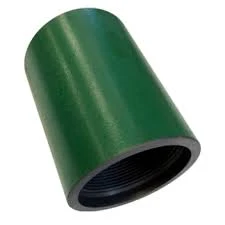- Afrikaans
- Albanian
- Amharic
- Arabic
- Armenian
- Azerbaijani
- Basque
- Belarusian
- Bengali
- Bosnian
- Bulgarian
- Catalan
- Cebuano
- Corsican
- Croatian
- Czech
- Danish
- Dutch
- English
- Esperanto
- Estonian
- Finnish
- French
- Frisian
- Galician
- Georgian
- German
- Greek
- Gujarati
- Haitian Creole
- hausa
- hawaiian
- Hebrew
- Hindi
- Miao
- Hungarian
- Icelandic
- igbo
- Indonesian
- irish
- Italian
- Japanese
- Javanese
- Kannada
- kazakh
- Khmer
- Rwandese
- Korean
- Kurdish
- Kyrgyz
- Lao
- Latin
- Latvian
- Lithuanian
- Luxembourgish
- Macedonian
- Malgashi
- Malay
- Malayalam
- Maltese
- Maori
- Marathi
- Mongolian
- Myanmar
- Nepali
- Norwegian
- Norwegian
- Occitan
- Pashto
- Persian
- Polish
- Portuguese
- Punjabi
- Romanian
- Russian
- Samoan
- Scottish Gaelic
- Serbian
- Sesotho
- Shona
- Sindhi
- Sinhala
- Slovak
- Slovenian
- Somali
- Spanish
- Sundanese
- Swahili
- Swedish
- Tagalog
- Tajik
- Tamil
- Tatar
- Telugu
- Thai
- Turkish
- Turkmen
- Ukrainian
- Urdu
- Uighur
- Uzbek
- Vietnamese
- Welsh
- Bantu
- Yiddish
- Yoruba
- Zulu
what is bull plug
What is a Bull Plug? Understanding the Basics and Applications
In the world of plumbing, construction, and various engineering fields, specific terms and tools are crucial for effective communication and operation. One such term is bull plug. While it may sound niche, understanding what a bull plug is and its applications can enrich your knowledge of plumbing apparatus.
A bull plug, also referred to as a bullhead plug, is a type of plug fitting used in piping systems. It is typically made from various materials, including brass, plastic, and stainless steel, depending on the application and the medium it’s meant to seal. The bull plug is characterized by its design, which incorporates a tapered or rounded shape that makes it particularly effective for sealing off pipes. This design allows for easy installation and removal, making it a preferred choice in various industries.
Applications of Bull Plugs
Bull plugs are utilized in numerous applications, both in residential and industrial settings. Here are some common uses
1. Sealing Pipe Endings One of the primary uses of a bull plug is to close off the ends of pipes, preventing water, gas, or other fluids from leaking. This is crucial in plumbing systems where maintaining pressure is essential.
2. Testing Bull plugs are often used during pressure testing of plumbing systems. By sealing pipe ends, they allow technicians to test for leaks before a system goes live. This is a vital step in ensuring safety and functionality.
3. Temporary Solutions In construction and plumbing, there are instances where a pipe may need to be temporarily sealed to halt operations or to allow for repairs. Bull plugs serve as a quick and efficient solution in these situations.
4. Drainage Systems In some drainage systems, bull plugs are used to block off certain lines temporarily, allowing for maintenance or cleaning of other parts of the system without disrupting the flow entirely.
what is bull plug

Choosing the Right Bull Plug
Selecting the appropriate bull plug for your project involves considering several factors
- Material Depending on the application, you may need a bull plug made from a specific material. For example, metal might be required for high-pressure applications, while plastic could suffice for low-pressure drainage systems.
- Size Bull plugs come in various sizes to fit different pipe diameters. It is essential to measure the pipe size accurately to ensure a proper fit, preventing any leaks.
- Compatibility Ensure that the bull plug is compatible with the existing piping material (e.g., PVC, copper, or galvanized steel) to avoid issues like corrosion or chemical reactions.
Installation and Maintenance
Installing a bull plug is generally straightforward but should be done carefully. It usually involves threading the plug into the pipe fitting until it is tight. However, using too much force can damage the threads or the material. Once installed, regular inspections can help identify any potential leaks or issues with the seal.
Conclusion
In summary, a bull plug is a vital component in various plumbing and engineering applications, serving to seal pipe ends, allow for testing, and provide temporary solutions. Understanding its function, application, and installation process can aid both professionals and DIY enthusiasts in ensuring the efficiency and safety of their plumbing systems. With the right knowledge and tools, working with bull plugs can be a seamless part of maintaining various piping systems in both residential and industrial contexts.
-
Tubing Pup Joints: Essential Components for Oil and Gas OperationsNewsJul.10,2025
-
Pup Joints: Essential Components for Reliable Drilling OperationsNewsJul.10,2025
-
Pipe Couplings: Connecting Your World EfficientlyNewsJul.10,2025
-
Mastering Oilfield Operations with Quality Tubing and CasingNewsJul.10,2025
-
High-Quality Casing Couplings for Every NeedNewsJul.10,2025
-
Boost Your Drilling Efficiency with Premium Crossover Tools & Seating NipplesNewsJul.10,2025







